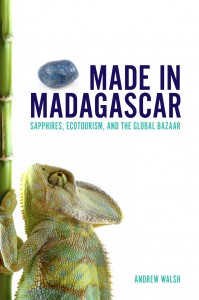 As we watch the course orders for the Spring 2013 term starting to come in, it’s clear that Made in Madagascar, our newest ethnography in the Teaching Culture Series, has caught instructors’ imaginations. Course adoptions are happening at every kind of institution – large and small, public and private, community college and top tier university, etc., and for a variety of courses from introductory to senior upper-year levels.
As we watch the course orders for the Spring 2013 term starting to come in, it’s clear that Made in Madagascar, our newest ethnography in the Teaching Culture Series, has caught instructors’ imaginations. Course adoptions are happening at every kind of institution – large and small, public and private, community college and top tier university, etc., and for a variety of courses from introductory to senior upper-year levels.
How can one book find such a varied set of homes? Quite simply, I think there are a number of unmet needs emerging in the undergraduate classroom, and that this particular book manages to satisfy enough of them to make it easy to assign.
What kinds of unmet needs? The first is the need for brevity. When people at the AAA meetings in San Francisco looked at Made in Madagascar, the first thing they commented on was the length (125 pages, all inclusive). They said things like, “My students could actually read the entire book,” or “This is short enough to assign with other texts.”
The second need is for relevance. Students today access the world through a very limited lens of personal experience. If they can make connections to their world easily, they often become amazingly open to broader things. Walsh manages to use a friendly voice that puts readers at ease – “Trust me,” it says, “and I will take you interesting places.” He also builds interest in Madagascar (not a place students normally think or care about), first with an interactive tour of the country on the author’s blog, and then with a story that starts simply, before picking up speed and becoming more sophisticated.
The third is a need for a story that can be read at multiple levels. Walsh is masterful in the way he organizes the book to meet this need. At one level, this story is about sapphire mining and ecotourists in a country that few people know much about. At another level, it’s about more sophisticated ways of looking at what we consider to be “nature” and “natural” in this world, and how we value these things when we exhange them in a global market. Finally, Walsh manages to make connections with anthropology itself.
Any one of these needs might be met in any number of ethnographies. I would like to suggest that few manage to meet as many needs as this book does, and that accounts for its success.
Do you and your students have similar needs? What ethnographies have worked for you, and why? As always, feel free to leave a comment or send us your thoughts via Twitter (@TeachingCulture).
Anne Brackenbury, Anthropology Editor



